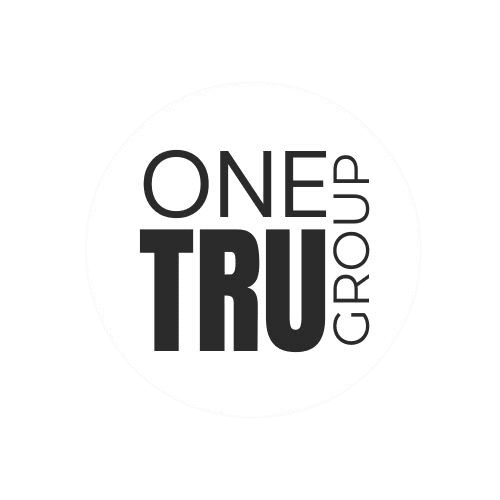Understanding Outsourcing
Outsourcing is a strategic business practice in which a company delegates certain functions or tasks to external service providers, often located domestically or internationally. This decision allows businesses to focus on their core competencies while controlling costs and accessing specialized skills not available in-house. Commonly outsourced functions include customer service, IT support, human resources, and accounting, although the range can extend to various operational aspects such as marketing, manufacturing, and data entry.
The primary benefit of outsourcing lies in its potential to enhance cost efficiency. By engaging third-party service providers, organizations can reduce operational expenses significantly. The practice allows businesses to save money on hiring, training, and maintaining full-time staff. Additionally, outsourcing can be a flexible solution that enables companies to scale resources up or down based on evolving demands, ensuring they can respond swiftly to market changes without incurring unnecessary overhead costs.
Accessing specialized skills is another pivotal advantage; businesses often outsource to tap into expertise and technology that may otherwise be prohibitively expensive or complicated to acquire. For instance, a small company lacking in-depth technological know-how might outsource its IT services to a specialized firm, thereby benefiting from advanced capabilities without the financial burden of employing an entire in-house IT department. This strategic allocation of resources can improve efficiency and elevate business outcomes.
In the context of modern business strategies, outsourcing has emerged as a crucial component for organizations aiming to remain competitive. The ability to save money while enhancing service quality and efficiency positions outsourcing as a vital tool in the ongoing quest for operational excellence. As companies navigate an increasingly complex global market, those that embrace outsourcing effectively can unlock significant savings and streamline their operations with ease.
Identifying Areas to Outsource for Cost Savings
The process of identifying which business functions to outsource requires a strategic approach, focusing on specific areas that can yield significant cost savings. Common functions ripe for outsourcing include IT services, customer support, marketing, and administrative tasks. By understanding the characteristics of each function, organizations can make informed decisions that maximize their return on investment (ROI).
IT services are among the most frequently outsourced functions. Many businesses find that outsourcing these services can lead to substantial cost reductions, as they can avoid the overhead associated with maintaining an in-house team. Companies specializing in IT can provide more specialized expertise at a lower cost compared to internal resources. Additionally, outsourcing IT can enhance flexibility, as organizations can scale their services in response to fluctuating demands.
Another area that often benefits from outsourcing is customer support. Businesses can reduce costs while improving customer satisfaction by relying on third-party service providers who specialize in handling customer inquiries efficiently. Outsourced customer support systems often utilize advanced technologies and trained personnel, which can significantly enhance service quality while cutting expenses.
Marketing functions also present an opportunity for savings. Engaging an external agency for marketing services allows companies access to a broader skill set and innovative strategies without the financial burden of hiring full-time staff. This approach can be particularly advantageous for small and medium-sized enterprises that are looking to expand their market presence without substantial investment.
Lastly, administrative tasks are frequently outsourced to streamline operations. By contracting these functions out, organizations can free their internal teams to focus on core business activities, generating potential revenue increases while saving money on administrative costs.
When assessing which areas to prioritize for outsourcing, organizations should evaluate the potential ROI for each function. This entails analyzing current expenses, projected savings, and the expected impact on overall business performance. By taking this systematic approach, companies can strategically identify the best functions for outsourcing and effectively cut costs.
Evaluating Outsourcing Partners
When considering outsourcing as a strategy to streamline operations and save money, the selection of partners is critical. The process of evaluating potential outsourcing providers involves several key criteria that can significantly influence the success of the relationship. Firstly, it is essential to assess the expertise of the provider. This involves examining the specific skills and experience of the service provider in relation to your business’s requirements. A partner with a proven track record in the relevant industry will likely deliver better results and more reliable service.
Reliability is another crucial factor in the evaluation process. Potential partners should have a reputation for trustworthiness and consistency in their service delivery. This can often be gauged by considering client testimonials, case studies, and industry certifications. Furthermore, it is advisable to seek providers who demonstrate flexibility and adaptability, essential traits for navigating the dynamic nature of outsourcing contracts.
Cost-effectiveness is naturally a primary concern for businesses looking to outsource. It is important to analyze not just the initial pricing but also the total cost of ownership over the duration of the contract. A low initial quote might come with hidden costs or lack of service quality, leading to greater expenditures in the long run. Therefore, conducting comprehensive research into these factors can help mitigate financial risks associated with outsourcing.
Effective communication and cultural fit cannot be overlooked. Given that outsourcing often involves collaboration across different time zones and cultural landscapes, it is vital to choose a partner whose communication style aligns with your organization’s culture. Strategies such as interviews, trial projects, and reference checks can be valuable in conducting due diligence. By thoroughly vetting potential outsourcing partners, businesses can establish a foundation for successful collaboration that enhances quality service delivery and optimizes operational costs.
Measuring and Maximizing Cost Savings
Understanding the financial benefits of outsourcing is essential for organizations seeking to optimize their operations and improve their bottom line. To effectively measure the impact of business process outsourcing (BPO), companies should focus on key metrics that provide insight into overall cost savings and productivity gains. One primary metric is the reduction in overhead costs, which includes savings on infrastructure, technology, and personnel expenses. By comparing pre-outsourcing costs with post-outsourcing expenses, organizations can quantify the financial advantages gained through outsourcing.
Additionally, evaluating productivity gains through outsourcing is critical. Metrics such as employee efficiency, output quality, and turnaround time can offer valuable information on how BPO initiatives contribute to enhanced operational performance. Tracking these metrics not only highlights the immediate financial benefits but also sheds light on longer-term implications for business growth and scalability.
To further maximize cost savings associated with outsourcing, organizations should consider implementing strategies that foster continual improvement and optimization of outsourced operations. Regular performance reviews of outsourcing partners are vital for assessing their effectiveness and ensuring that their services align with the company’s goals. Such reviews can highlight areas where adjustments are necessary, ensuring that the outsourcing relationship remains beneficial.
Moreover, maintaining strong relationships with outsourcing partners allows companies to negotiate better terms and services over time, further contributing to cost reduction. Open communication is fundamental in these partnerships, allowing both parties to adapt to changing circumstances and market conditions. By applying these strategies, businesses can not only measure their savings but also cultivate a robust outsourcing strategy that leads to sustained financial benefits and operational efficiency.




